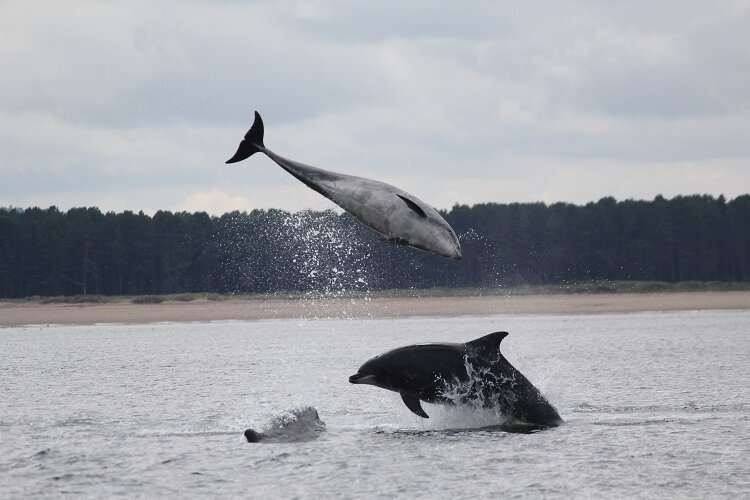Ancient genes vital for dolphin survival

Ancient genes that predate the last Ice Age may be the key to survival, at least if you are a dolphin, according to new research led by the University of St Andrews.
Genes up to 2.3 million-years-old helped the bottlenose dolphin adapt to new habitats through changes in behavior and may be the secret to their survival and range expansion, according to the new research published in Science Advances.
Understanding the processes that allow species to extend their ranges and adapt to environmental conditions in a newly available habitat, such as coastal habitats at the end of the last Ice Age, is an essential question in biology.
This new international study involving the University of Montpellier, the University of Groningen, the Norwegian University of Science and Technology, the University of Copenhagen and the University of La Rochelle in collaboration with researchers from Scotland, Ireland, the United States and Switzerland addressed this in the highly social and long-lived common bottlenose dolphin, a species which has repeatedly adapted from being an offshore (pelagic) species to life in coastal waters.
Key to their ability to adapt to changing environments over generations are genes associated with cognitive abilities and feeding behaviors, indicating that bottlenose dolphin sociality has helped them to adapt and survive.
Dr. Marie Louis, visiting scholar in Professor Oscar Gaggiotti's research group in the School of Biology at the University of St Andrews, said: "Old genes were important contributors to bottlenose dolphins' ability to repeatedly adapt to coastal waters across the world.
"Furthermore, several of the genes involved in this repeated adaptation to coastal habitats have roles in cognitive abilities and feeding, suggesting a role of social behavior in facilitating the ability of bottlenose dolphins to adapt to novel conditions.
"Conserving old genes may thus be critical for any species to cope with current rapid global change."
The research team re-sequenced and analyzed the whole genomes of 57 coastal and pelagic dolphins from three regions—the eastern North Atlantic, western North Atlantic and eastern North Pacific—to figure out how the bottlenose dolphin has been able to repeatedly adapt to coastal waters.
The team found that the pelagic and coastal ecotypes from the Atlantic and the Pacific have evolved independently, while those in the Atlantic are partially related.
Scanning the genomes for patterns of genetic diversity and differentiation, the team found that some regions of the genome were under the influence of selection in all three geographically distant coastal populations and were thus likely involved in adaptation to coastal habitats.
Even more striking was the fact that these genomic regions under parallel adaptation, and present at low to intermediate frequency in the pelagic populations, were very old.
This suggests that these old genes have been repeatedly repackaged during the formation of coastal populations, when new coastal habitats opened up, for example at the end of the last Ice Age.
The paper "Selection on ancestral genetic variation fuels repeated ecotype formation in bottlenose dolphins" is published in Science Advances.
More information: Marie Louis et al, Selection on ancestral genetic variation fuels repeated ecotype formation in bottlenose dolphins, Science Advances (2021). DOI: 10.1126/sciadv.abg1245
Journal information: Science Advances
Provided by University of St Andrews


















